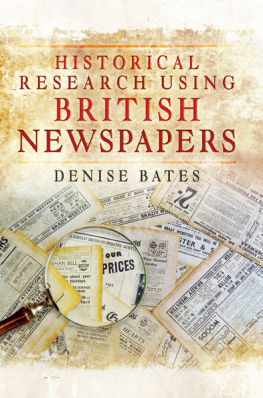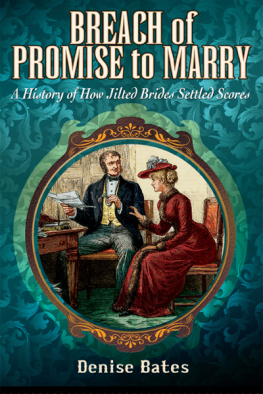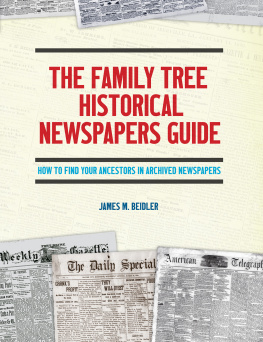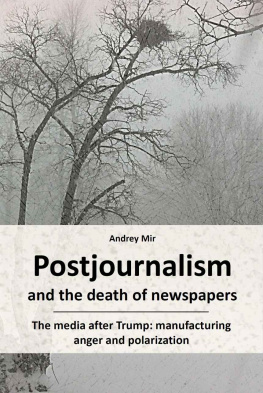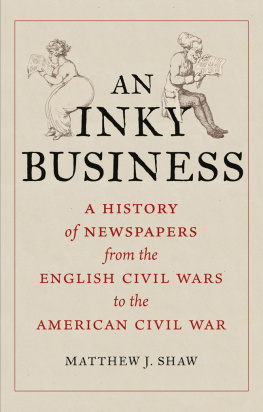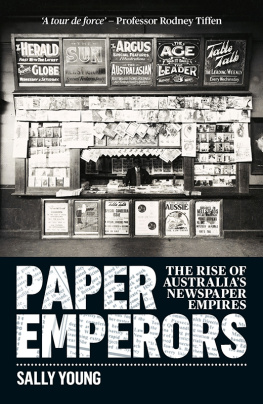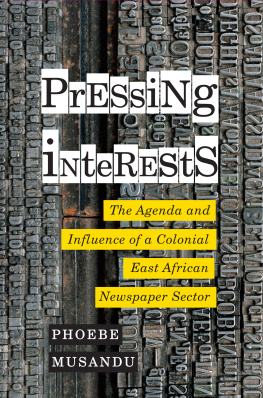Remembering my lovely grandparents
Mary and William Marshall
who fostered my love of reading
First published in Great Britain in 2016 by
Pen & Sword History
an imprint of
Pen & Sword Books Ltd
47 Church Street
Barnsley
South Yorkshire
S70 2AS
Copyright Denise Bates 2016
ISBN: 978 1 47385 900 5
PDF ISBN: 978 1 47385 903 6
EPUB ISBN: 978 1 47385 902 9
PRC ISBN: 978 1 47385 901 2
The right of Denise Bates to be identified as the Author of this Work has been asserted by her in accordance with the Copyright, Designs and Patents Act 1988.
A CIP catalogue record for this book is available from the British Library
All rights reserved. No part of this book may be reproduced or transmitted in any form or by any means, electronic or mechanical including photocopying, recording or by any information storage and retrieval system, without permission from the Publisher in writing.
Typeset in Ehrhardt by
Mac Style Ltd, Bridlington, East Yorkshire
Printed and bound in the UK by CPI Group (UK) Ltd,
Croydon, CRO 4YY
Pen & Sword Books Ltd incorporates the imprints of Pen & Sword Archaeology, Atlas, Aviation, Battleground, Discovery, Family History, History, Maritime, Military, Naval, Politics, Railways, Select, Transport, True Crime, and Fiction, Frontline Books, Leo Cooper, Praetorian Press, Seaforth Publishing and Wharncliffe.
For a complete list of Pen & Sword titles please contact
PEN & SWORD BOOKS LIMITED
47 Church Street, Barnsley, South Yorkshire, S70 2AS, England
E-mail:
Website: www.pen-and-sword.co.uk
Contents
Introduction
T he idea of writing a book about using old newspapers for historical research arose from the very positive reaction received to a blog I wrote for The British Newspaper Archive. My first two books, Pit Lasses and Breach of Promise to Marry, had each used on-line historical newspapers as a significant source of information. During the two periods of research, I not only gathered plenty of new information about my topics but also learned much about the practicalities of using on-line newspapers, a relatively new skill for a historian to master.
Translating this initial learning into a full length book has involved many more fascinating discoveries about three centuries of the British newspaper industry and how individual titles found their niche in the political, economic and social fabric of the country. It has been an exciting journey of discovery.
Although the name on the front cover is mine, researching and writing a book and steering the manuscript through the production process involves many more people than just the author. Four researchers, Rachel Bates, Angela Buckley, Suzie Grogan and Gill Hoffs have all used old newspapers in a different manner to my own and have generously written a short piece about their studies to help illustrate the innovative ways in which historians can approach this exciting source. Thanks are also due to commissioning editor Eloise Hansen and the production staff at Pen and Sword Books for all the practical tasks that contribute to turning a script into a newly printed book.
Pen and Sword are part of the same Ltd. group as the Barnsley Chronicle, a weekly newspaper that has served the town for over 150 years. Thanks are expressed to them for allowing me to use content from this newspaper for illustration. The British Newspaper Archive has generously allowed me to include material from its excellent collection and use screen shots from its on-line newspaper search facility. The help provided by Amy Sell and Megan Charnley at The British Newspaper Archive and by all the staff at the Barnsley Archive is greatly appreciated.
I believe that all the illustrative and example material I have included is either freely available or that I hold the necessary permission. All rights pertaining to any trade marks that may have been mentioned in the text are acknowledged. If anyone believes that I have infringed their rights, please contact me so that this can be corrected in any future editions.
Finally, I would like to thank my husband, sons, daughter-in-law, mother and mother-in-law for all the help, encouragement and practical support they have provided in their different ways. Without their valuable input this book would be the poorer.
Denise Bates
31st July 2015
Chapter 1
A Brief History of Newspapers in Britain
How the newspaper industry developed
A lmost as soon as Johannes Gutenberg developed his revolutionary mechanical printing equipment in the mid-fifteenth century, news sheets, pamphlets and posters flew off the new-style presses. Up-to-date commercial information had a ready audience amongst a growing entrepreneurial class of traders, merchants and brokers and the London Gazette founded in 1665 as the Oxford Gazette is usually regarded as Britains first newspaper.
Commercial news and studies of weighty subjects were the respectable element of this early publishing industry and gradually evolved into reputable newspapers and periodicals. Other printed matter was more brash and brazen. Openly poking fun, challenging authority and disseminating scandal, it appealed to the baser instincts of human nature.
By the early decades of the eighteenth century, more than a dozen publications were in existence covering many types of news but their development was rued by the ruling classes and successive governments tried to suppress the flow of knowledge to the wider populace. One tactic was to restrict what could be circulated in print. Reporting anything about the business or apparatus of government, even if the story was truthful, or advocating change against the wishes of the ruling elite, was to court trouble. Harsh measures were taken against subversives who published unwelcome details and editors and writers could easily find themselves in court charged with seditious libel. This was a very serious crime which involved bringing into disrepute the public institutions of the country, such as Parliament, the monarchy and the legal system and those involved in running them. A guilty verdict usually meant punitive fines or jail, which effectively meant the end for the newspaper as it had been deprived of its money or its editor, or both.
A less draconian tactic was to tax every copy of a newspaper that was sold. This artificially raised its price, keeping those on small incomes out of the market but enabling the thriving commercial class to obtain information that was relevant for their business. This tax, known as Stamp Duty, was first imposed in 1712 but the low rate of a halfpenny (d) per copy was not excessive. In 1797, as Britains ruling class shuddered at the thought of the French Revolution triggering a similar uprising by the British poor, Stamp Duty was increased to 3d to try to suppress news about events across the Channel. The defeat of Napoleon Bonaparte in 1815 failed to diminish upper class anxiety about a revolt amongst British workers and, in response to industrial unrest, Stamp Duty was raised to 4d, perhaps more than half the cost of the paper. By 1819, workers unrest had intensified and further measures were brought in to try to stifle dissent. More publications were brought within the scope of Stamp Duty and publishers had to enter into bonds and lodge money with the authorities to guarantee that they would only print what was lawful.
In the 1830s the official mood was more benign. The spectre of imminent revolution by the poor had ceased to haunt the ruling classes and some recognised that good newspaper editors were working to high professional standards. By 1836, Stamp Duty had been reduced to 1d as those who exercised political power began to realise how well their own interests might be served by informed public opinion. In 1843, Lord Campbell steered a Libel Act through Parliament. This made it easier for newspapers to report what was happening as editors could now defend themselves in criminal proceedings by demonstrating that the statement complained of was true and that printing it was for the public benefit. In 1855, during a period of relative social calm and economic prosperity, but also a time of war in the Crimean Peninsula, Stamp Duty on newspapers was abolished completely in Britain. After more than 150 years of official repression and obstruction, newspapers and their editors were at liberty to publish the truth, to highlight unfairness and to campaign for reform as they chose.
Next page
